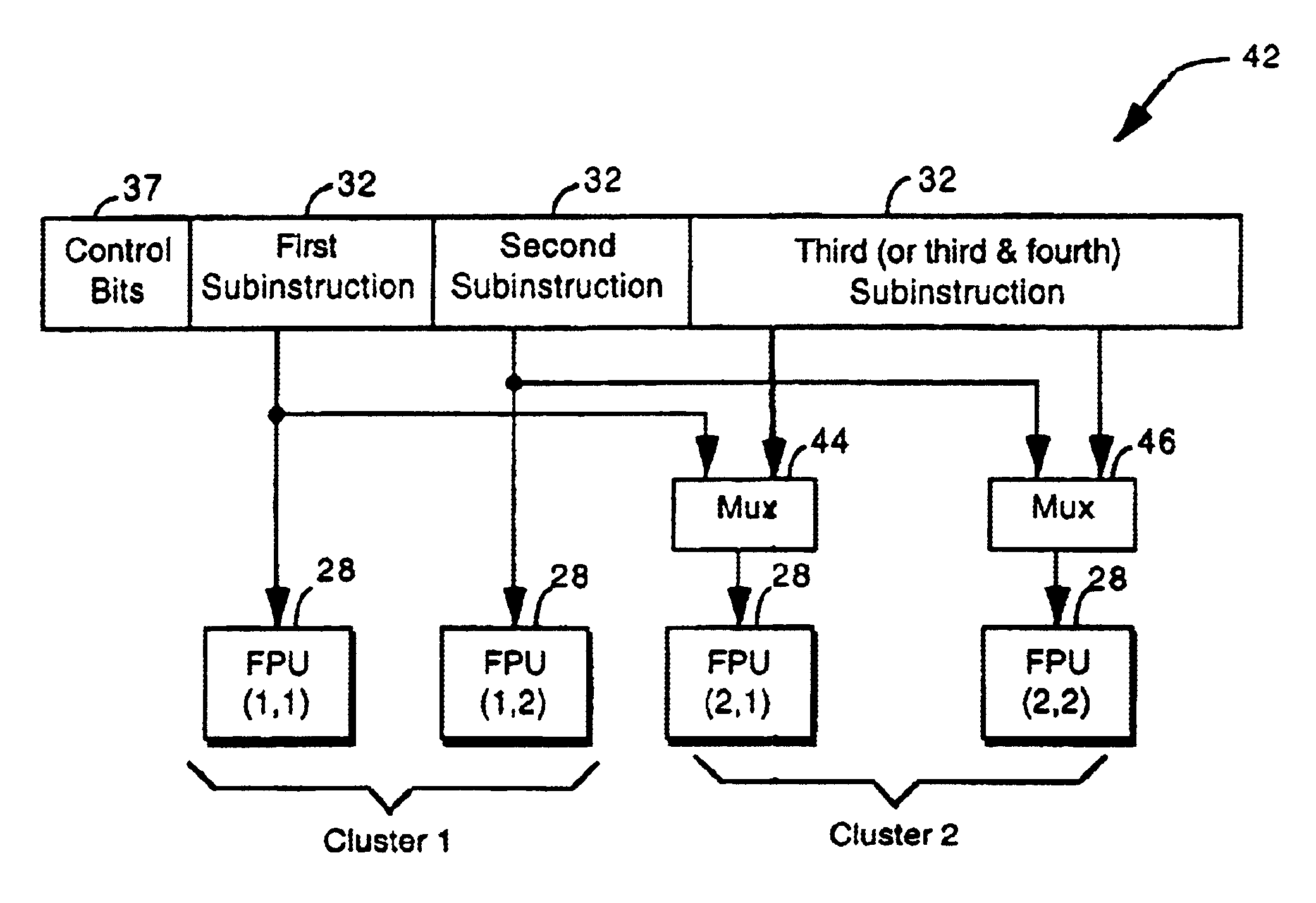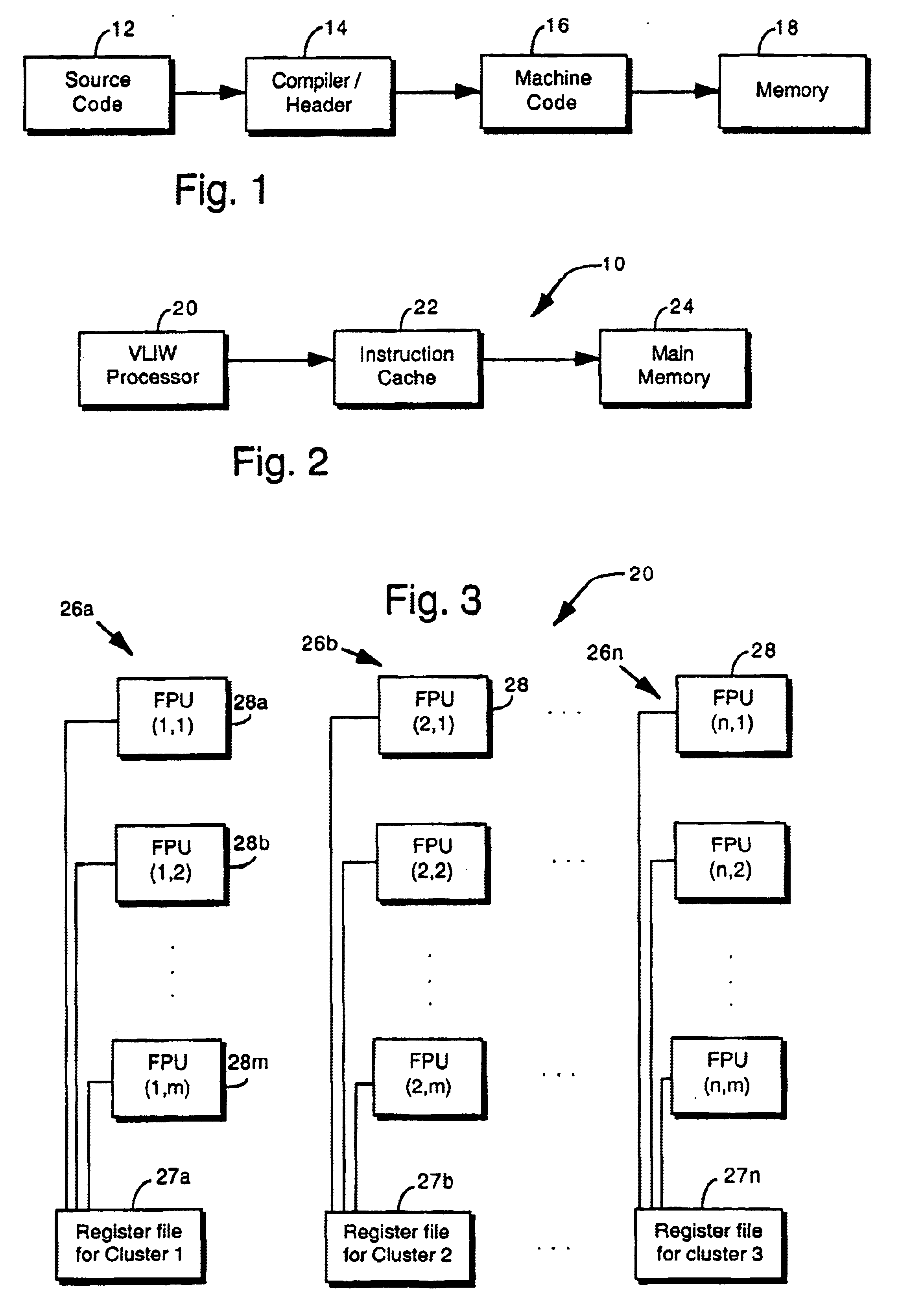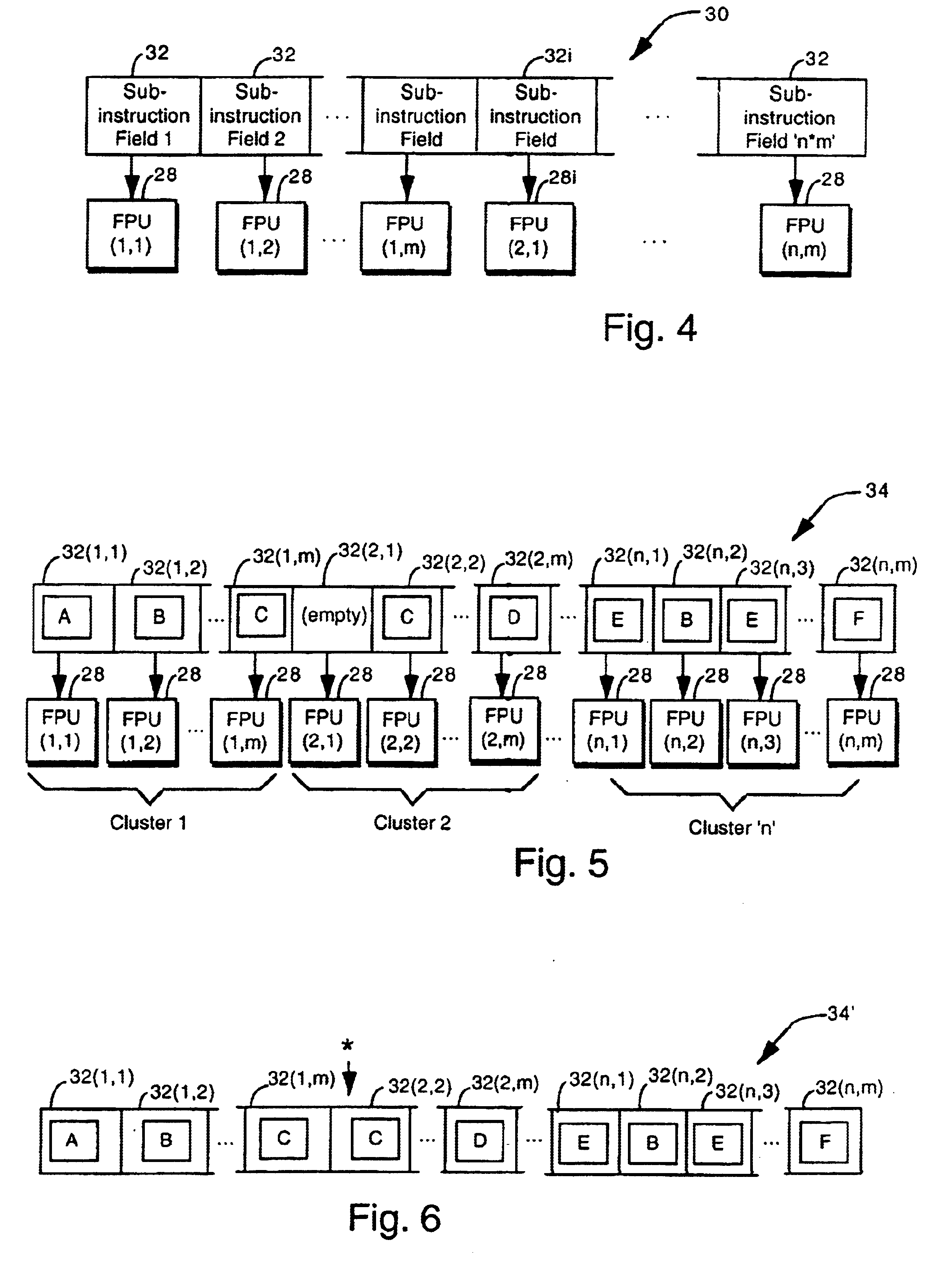Method and apparatus for compressing VLIW instruction and sharing subinstructions
a technology of instruction and instruction, applied in the field of very long instruction word (vliw) computing architecture, can solve the problems of correspondingly increasing the burden on data flow and memory structure, degrading performance, etc., and achieves the effects of reducing program size, avoiding redundancy in vliw instructions, and improving the efficiency of instruction cache usag
- Summary
- Abstract
- Description
- Claims
- Application Information
AI Technical Summary
Benefits of technology
Problems solved by technology
Method used
Image
Examples
Embodiment Construction
Overview
FIG. 1 shows a block diagram of program compilation and storage for a very long instruction word (VLIW) processor. The term “very long instruction word” VLIW is a term of art in the fields of computer system and processor architecture, parallel processing and image processing, generally referring to architectures in which a processor is able to handle an instruction which typically is 64 bits or longer, and consists of multiple subinstructions.
A program engineer prepares, tests and debugs source code 12. The source code 12 is written in assembler language or a higher order programming language. The source code then is compiled / assembled by compiler / assembler 14 resulting in machine code 16. The machine code 16 is stored in memory 18 of a computer having a processor which is to execute the machine code 16.
Referring to FIG. 2, a host computer 10 includes a very long instruction word (VLIW) processor 20, an instruction cache 22, and main memory 24. In a preferred embodiment the...
PUM
 Login to View More
Login to View More Abstract
Description
Claims
Application Information
 Login to View More
Login to View More - R&D
- Intellectual Property
- Life Sciences
- Materials
- Tech Scout
- Unparalleled Data Quality
- Higher Quality Content
- 60% Fewer Hallucinations
Browse by: Latest US Patents, China's latest patents, Technical Efficacy Thesaurus, Application Domain, Technology Topic, Popular Technical Reports.
© 2025 PatSnap. All rights reserved.Legal|Privacy policy|Modern Slavery Act Transparency Statement|Sitemap|About US| Contact US: help@patsnap.com



